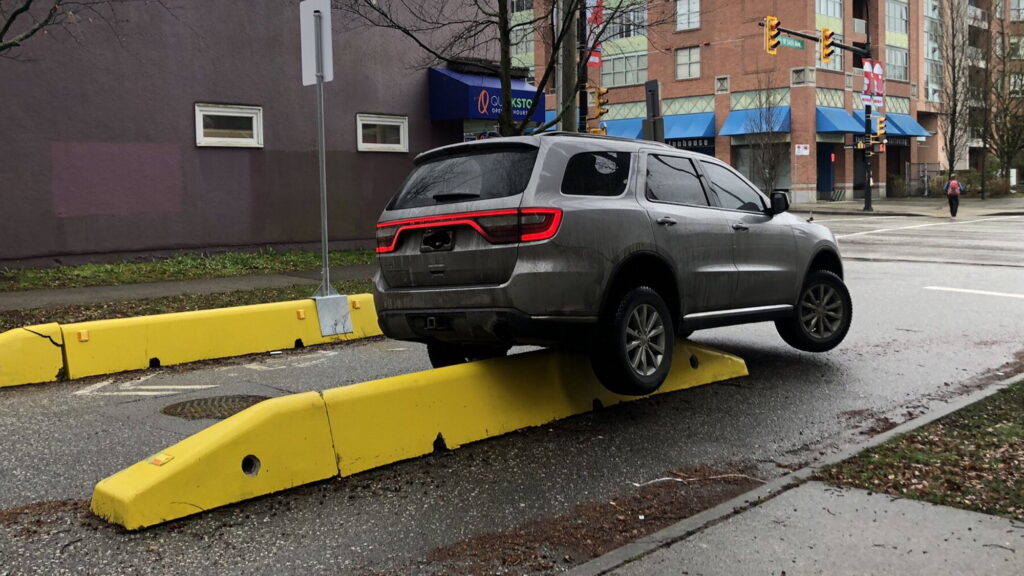The new concrete barriers are painted bright yellow and feature road signs, but one motorist still managed to get beached on one
2 hours ago
 –>
–> 
by Sebastien Bell
–>
During the pandemic, the city of Vancouver, British Columbia, in Canada introduced something called the “Slow Streets” campaign. Now being made permanent, the city has added concrete barriers that some residents say have led to big accidents.
Local reporter Jill Bennett took to Twitter recently to complain that the Slow Streets barriers were causing accidents. Posting a photo of a Dodge Durango beached on one of the bright low yellow barriers, she claimed that it was the second incident she had seen related to the campaign.
Although she said that the barriers are ineffective and cause crashes, not everyone agrees. The Slow Street campaign was introduced in May 2022, in an effort to slow traffic on residential side streets and to make walking and cycling safer, reports the Daily Hive.
At first, the barriers were made of plastic, and were, therefore, taller, lighter, and more movable. As a result, the city said that some people were moving the barriers off the streets, requiring employees to move them back into place.
Read: Take A Look At How Clever Engineering Has Made Highway Barriers Much Safer
That may suggest that some of the people in these locations were unhappy with the measure, but the city of Vancouver was satisfied enough with the result of the experiment to make it permanent.
To that end, it installed concrete barriers that are located on streets with speeding problems, where they intersect with higher-traffic roads. They are intended to act as both a visual (they’re bright yellow and feature clear signage) and a physical (they cut the road down to one lane) reminder that drivers should slow down.
In all, it cost the city $200,000 CAD ($145,425 USD at current exchange rates) to install all 42 permanent barriers around the city, which seek to restrict speeds on some 25 miles (40 km) of roadway. The city says that will actually save taxpayers money, sparing it the expense of paying people to drive around and put the temporary barriers back in place.
While Bennett is far from the only person questioning the value of paying for the Slow Streets project at all, many are in favor of it. Speaking to CityNews Vancouver, Andy Yan, the director of the Simon Faser University’s City Program, said projects like these are necessary.
“There is, I think, the need for this type of program as we transition from a city that was, I think, dominated by the automobile, into something that deals with much more sustainable modes of transportation,” said Yan. “Really taking advantage of that shift and understanding that the excess capacity of streets for cars now actually create an opportunity for creating streets for people.”
Photo Jill Bennett / Twitter
 –>
–> 
